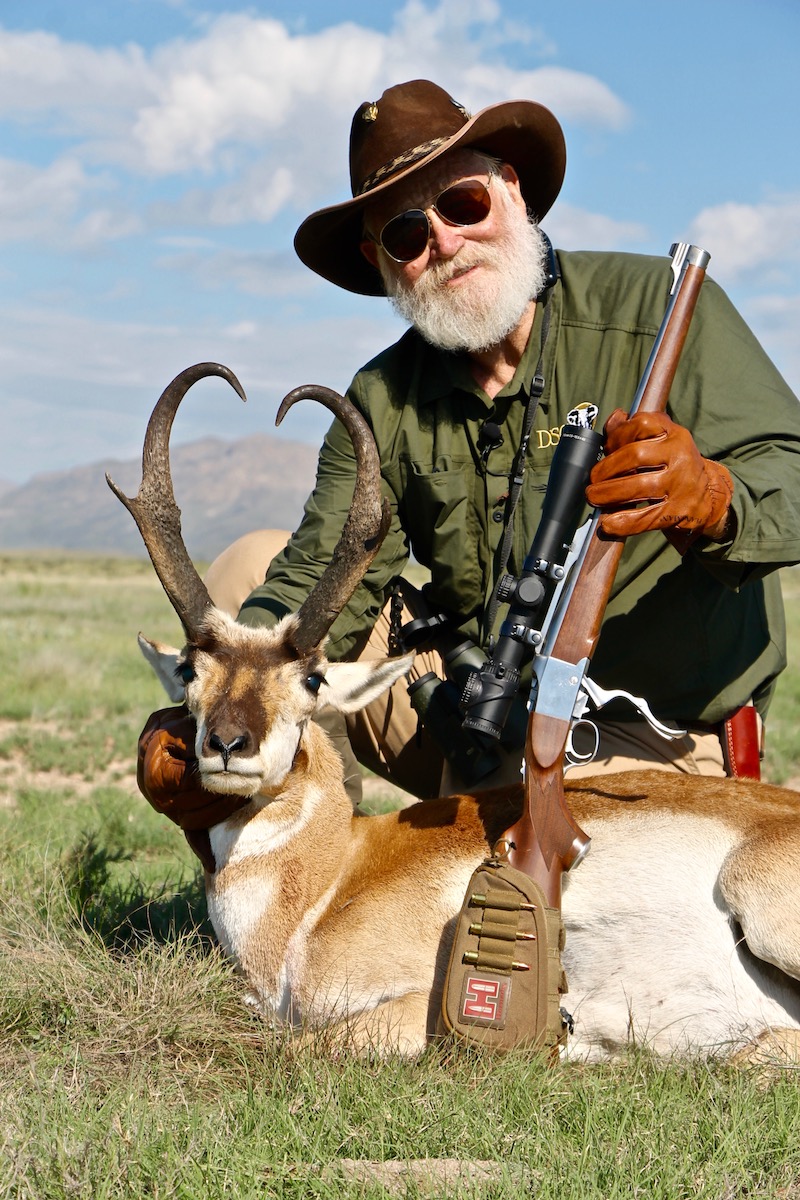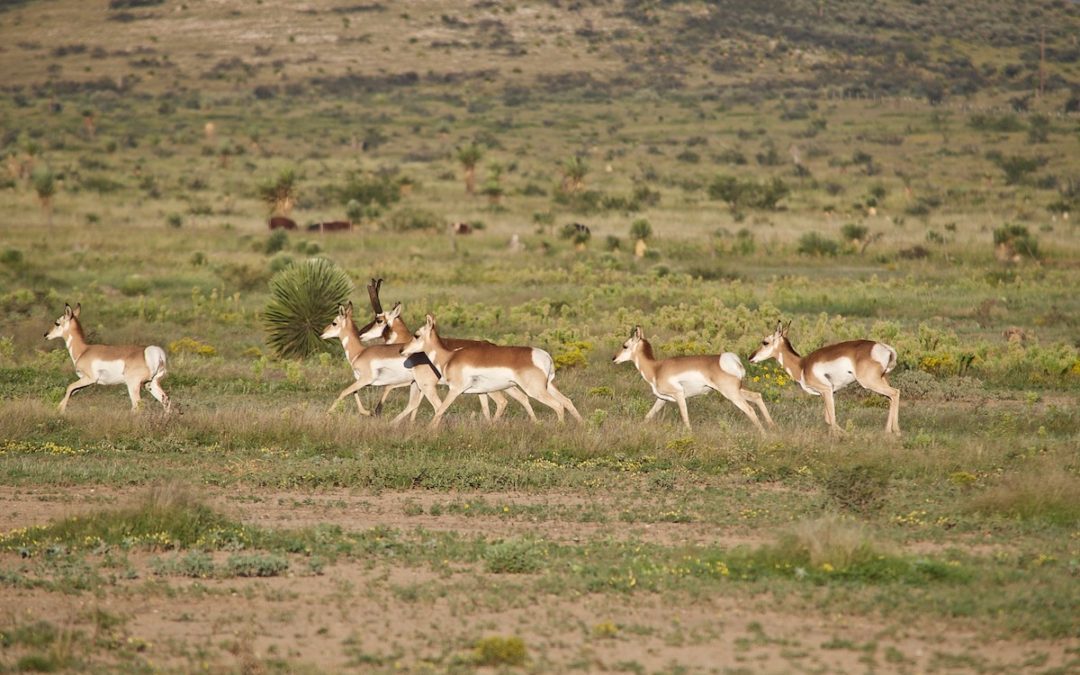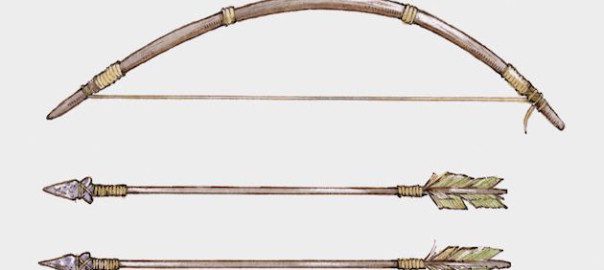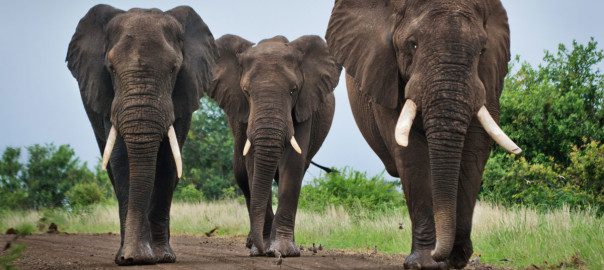
Weishuhn’s most recent antelope was taken with a Ruger No. 1 RSI chambered in .257 Roberts topped with a Trijicon AccuPoint scope shooting Hornady’s 117-grain SST Superformance ammunition.
A: Thrilled to hear you are journeying to Wyoming for pronghorn, one our great American wildlife success stories, fun to hunt, uniquely handsome and absolutely delicious.
Many perceive pronghorn as a great distance target, but by taking your time and advantage of available cover most can be approached to within 300 yards or less. So mostly spot and stalk, but can also be hunted setting up near waterholes.
Over the years I have hunted and taken pronghorn in several states using .44 Mag revolvers and several single-shot handguns chambered for various rifle rounds, .45 and .50 caliber muzzleloaders, and single-shot and bolt-action rifles including those chambered for the diminutive .218 Bee up to .300 Mags. I have taken the majority of my pronghorn with .270 Win, .30-’06 and .50 muzzleloaders. My most recent pronghorn I shot hunting with Greg Simons’ Wildlife Systems using a .257 Roberts, in a Ruger No. 1 RSI topped with a Trijicon AccuPoint scope and shooting Hornady’s 117-grain SST Superformance ammo, interestingly shot at 257 yards. At 17 ½ inches, it has the longest horns of any antelope I have ever taken.
I also enjoy hunting with vintage rounds in single-shot rifles.
Choosing a round you can also use for coyotes in you home state, I would suggest something in the .244 to .284 or 6mm to 7mm range, and a possible consideration for a .308. Several of the .223 calibers including the.22-250 are excellent rounds and will certainly do the job on both pronghorn and coyotes. But, I personally like the slightly larger rounds.
One of the most popular cartridges right now is the 6.5 Creedmoor. This is an excellent round for both pronghorn and coyotes and other mid-sized game should you change your mind and decide to hunt mule deer once you have taken antelope. Got a feeling you are going to fall in love with “western hunting”!
The .264 caliber does well at longer ranges because of its bullets are long with a higher ballistic coefficient that help stabilize them at long range. The 6.5 Creedmoor is extremely accurate in most rifles and, with proper bullets and loads, extremely deadly. Those rifles I have chambered for the round prefer Hornady’s 143-grain ELD-X Precision Hunter ammunition. Thankfully, too, 6.5 Creedmoor shells are available just about anywhere ammo is sold. If you are into vintage cartridges, you might take a look at the 6.5×55, which is in many ways similar.
Other considerations are the .243 Winchester and .308; both are excellent rounds for pronghorn and coyotes. Ammo for those rounds, too, are available almost anywhere and in bullet styles for both big game and predators.
As to your choice of a rifle, I would highly suggest spending time visiting a gun shop with lots of firearms to look at and shoulder so you can find one that fits you and your “style,” one that “speaks to you!” My personal favorites rifles are those made of blued steel and stocked in pretty wood, but you may prefer stainless with a synthetic or laminated stock.
If possible you might also ask those who have invited you to possibly shoot the rifles they use on pronghorn to see how they fit you and see what calibers they suggest.
Once you choose a rifle, then it’s time to select a scope. Today’s optics (scopes) as a whole are the finest we have ever had available, but there are numerous questions to ask yourself in terms of magnification, reticle design and whether first or second plane, external adjustment or hold-over. For hunting, I prefer those that are not too busy and are easy to see in low light as well as second plane reticles that increase in size as you crank up the magnification. Once you have selected a rifle, scope and ammunition, head to the closest rifle range. There, spend as much time as possible learning your rifle’s capabilities and yours with it!
All this may sound a bit complicated, but the process if fun, enjoyable and educational. Let me know your final decision. All the best of luck with pronghorn and on coyotes back home!

As a wildlife biologist, Larry Weishuhn established quality wildlife management programs on approximately 12,000,000 across North America with emphasis on habitat and animal populations. As a writer, he has served on staff on numerous publications in hunting, shooting and wildlife management and has long been involved with the highest quality outdoor television productions.




